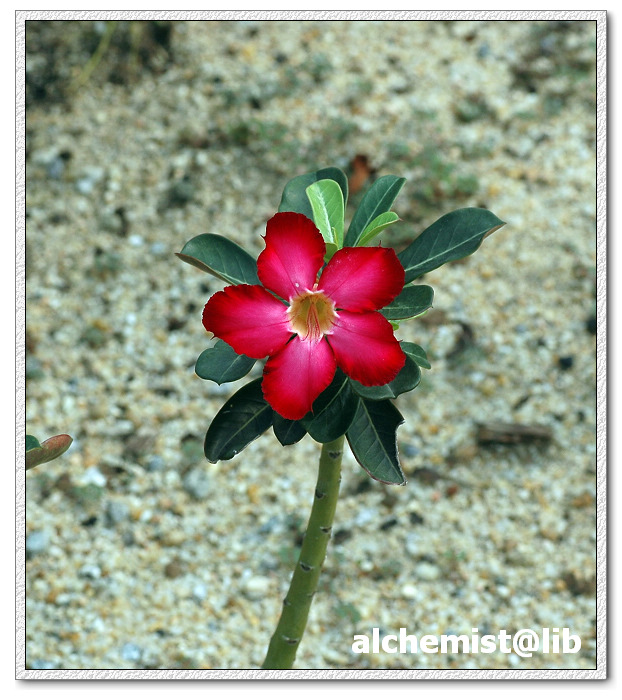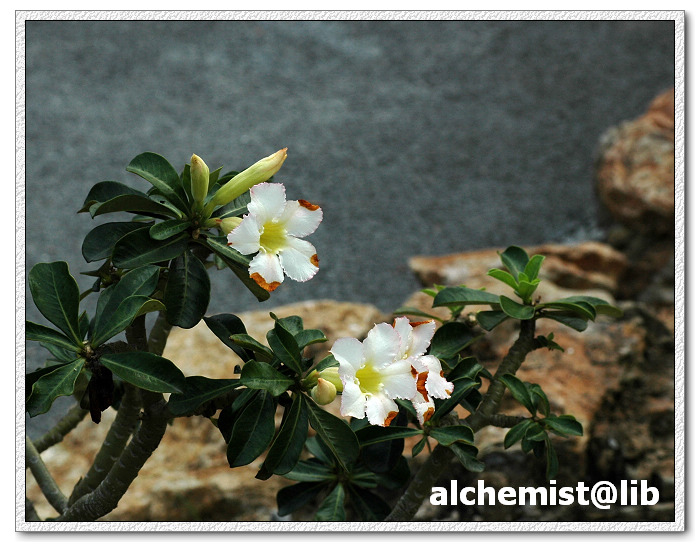沙漠玫瑰 Adenium obesum

- Scientific Name: Adenium obesum (Forssk.) Roem. & Schult.
- Ref: Syst. Veg., ed. 15 bis 4:411. 1819
- Synonyms: Adenium arabicum Balf.f.; A. arboreum Ehrenb.; A. coetaneum Stapf; A. honghel Lindl.; A. micranthum Stapf; A. obesum subsp. somalense (Balf.f.) G.D.Rowley; A. socotranum Vierh.; A. somalense Balf.f.; A. speciosum Fenzl; A. tricholepis Chiov.; Cameraria obesa (Forssk.) Spreng.; Nerium obesum Forssk.
- English Common Name: desert rose, Sabi star, kudu, mock azalea, impala lily
- Chinese Common Name: 沙漠玫瑰 shāmò méiguī
- Japanese Common Name: アデニウム adeniumu, デザートローズ/砂漠のバラ (desert rose) dezātorōzu/sabakunobara
- Family: Apocynaceae
- Genus: Adenium
- Distribution: native to the Sahel regions, south of the Sahara, and tropical and subtropical eastern and southern Africa and Arabia
- Photo: 06/21/2009, South China Botanical Garden, Guangdong
It is an evergreen or drought-deciduous succulent shrub (which can also lose its leaves during cold spells, or according to the subspecies or cultivar). It can grow to 1–3 m (3.3–9.8 ft) in height, with pachycaul stems and a stout, swollen basal caudex. The leaves are spirally arranged, clustered toward the tips of the shoots, simple entire, leathery in texture, 5–15 cm (2.0–5.9 in) long and 1–8 cm (0.39–3.15 in) broad. The flowers are tubular, 2–5 cm (0.79–1.97 in) long, with the outer portion 4–6 cm (1.6–2.4 in) diameter with five petals, resembling those of other related genera such as Plumeria and Nerium. The flowers tend to red and pink, often with a whitish blush outward of the throat. (wikipedia)

06/21/2009, South China Botanical Garden, Guangdong